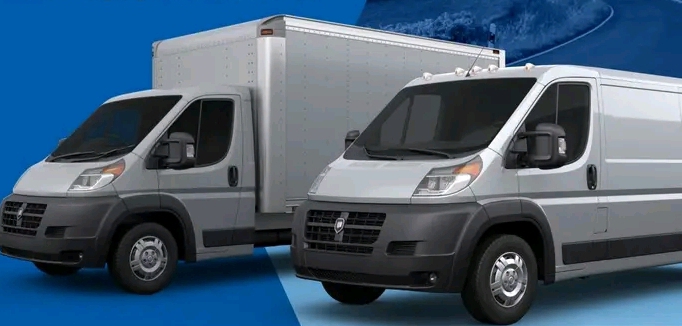
THE FUTURE OF AUTO INSURANCE: TRENDS AND INNOVATION
The future of auto insurance is likely to involve increased use of telematics for personalized pricing, incorporating AI for risk assessment, and advancements in claims processing through automation.
Additionally, innovations like usage-based insurance and partnerships with technology companies may play a significant role in shaping the industry. As vehicles become more connected, insurers are expected to leverage real-time data to better understand driver behavior and offer more tailored coverage.Certainly! Here’s a more detailed exploration of the future trends and innovations in auto insurance:
Telematics and Personalized Pricing:
Advancements in technology, particularly telematics, are reshaping the landscape of auto insurance. Telematics devices, which track driving behavior, enable insurers to gather real-time data on how, when, and where a vehicle is driven. This data helps in creating personalized insurance plans based on individual driving habits. Insurers can offer discounts to safer drivers, encouraging responsible behavior on the road.
Artificial Intelligence (AI) for Risk Assessment:
The integration of AI in the insurance industry is revolutionizing risk assessment. Machine learning algorithms can analyze vast amounts of data to accurately assess an individual’s risk profile. AI helps insurers predict and prevent potential accidents by identifying patterns in driving behavior, vehicle maintenance, and external factors. This proactive approach not only benefits insurers but also contributes to overall road safety.
Claims Processing Automation:
Innovations in claims processing are streamlining the customer experience. Automation through AI and machine learning expedites claims assessment, reducing the time it takes to settle a claim. This not only improves customer satisfaction but also enables insurers to operate more efficiently. The use of image recognition technology and digital platforms facilitates faster and more accurate damage assessments, simplifying the entire claims process.

THE FUTURE OF AUTO INSURANCE: TRENDS AND INNOVATION
Usage-Based Insurance (UBI):
Usage-based insurance is gaining popularity as a fairer and more transparent way to determine premiums. Instead of traditional factors like age and location, UBI relies on actual driving behavior. Insurers offer policies based on how much, when, and how well a person drives. This shift towards a pay-as-you-drive model aligns incentives between insurers and policyholders, promoting safer driving habits.
Partnerships with Technology Companies:
Collaborations between traditional insurers and technology companies are becoming more common. Insurers are partnering with companies that specialize in data analytics, IoT (Internet of Things), and smart car technologies. These partnerships facilitate the development of innovative products and services, enhancing customer experience and staying competitive in a rapidly evolving market.
Cybersecurity for Connected Vehicles:
With the rise of connected and autonomous vehicles, the importance of cybersecurity in auto insurance cannot be overstated. As vehicles become more technologically advanced, the risk of cyber threats increases. Insurers will need to incorporate robust cybersecurity measures to protect both the vehicle and the sensitive data generated by these connected systems.
Climate-Related Risk Assessments:
As climate change continues to impact weather patterns, insurers will likely incorporate climate-related risk assessments into their models. This could involve evaluating the vulnerability of certain regions to extreme weather events and adjusting premiums accordingly. Insurers may also explore new coverage options to address climate-related risks, such as flood or wildfire insurance.
Telematics and Personalized Pricing:
Telematics devices, often plugged into a vehicle’s OBD-II port or integrated into modern vehicles, continuously collect data on driving behavior. This includes factors like speed, acceleration, braking, and even the time of day a vehicle is in use. Insurers analyze this data to create individualized risk profiles. Safer drivers may receive discounts, fostering a culture of responsible driving. As technology advances, we may see more integration with in-car systems and the potential for real-time feedback to policyholders.
THE FUTURE OF AUTO INSURANCE: TRENDS AND INNOVATION
Artificial Intelligence (AI) for Risk Assessment:
AI plays a crucial role in processing vast amounts of data to assess risk accurately. Machine learning algorithms can identify patterns in historical data, helping insurers predict and prevent potential accidents. This proactive approach goes beyond traditional risk factors, incorporating dynamic elements such as weather conditions and road infrastructure. Continuous learning enables AI to adapt to evolving driving behaviors and external factors, making risk assessment more sophisticated and responsive.
Claims Processing Automation
Automation in claims processing involves the use of AI and machine learning to expedite various stages, from filing a claim to settlement. Chatbots and virtual assistants can handle initial claim submissions, while image recognition technology assesses damages from submitted photos. This not only speeds up the process but reduces errors and ensures fair assessments. Blockchain technology may also be integrated to enhance transparency and security in claims handling.
Usage-Based Insurance (UBI)
Usage-Based Insurance relies on IoT devices or smartphone apps to monitor driving behavior. These systems record metrics like mileage, speed, and instances of hard braking.
The collected data is then used to calculate premiums. UBI encourages responsible driving habits and provides a fairer pricing structure, aligning the cost of insurance more closely with actual risk. Insurers may explore incorporating additional metrics, such as adherence to traffic rules or awareness of surroundings.
Partnerships with Technology Companies:
Insurers are forming strategic partnerships with technology companies to leverage expertise in data analytics, IoT, and smart car technologies. This collaboration enables the development of innovative insurance products.
THE FUTURE OF AUTO INSURANCE: TRENDS AND INNOVATION
For example, insurers might offer policies that integrate seamlessly with smart home devices or provide additional coverage for emerging risks associated with autonomous vehicles. These partnerships facilitate a quicker adoption of cutting-edge technologies within the insurance industry.
Cybersecurity for Connected Vehicles:
As vehicles become more connected, the risk of cyber threats rises. Insurers will need to prioritize cybersecurity measures to protect not only the vehicle’s software but also the vast amounts of data transmitted between the vehicle and external networks.
This may involve partnerships with cybersecurity firms, the development of standardized security protocols for connected vehicles, and continuous updates to safeguard against evolving threats.
. Climate-Related Risk Assessments:
Climate change introduces new challenges for the insurance industry. Insurers may incorporate climate models and historical weather data into risk assessments to understand the increased likelihood of weather-related claims. This could lead to more accurate pricing for policies in regions prone to specific climate-related risks.
Additionally, insurers may explore innovative coverage options, such as parametric insurance, which pays out based on predefined weather conditions, providing quicker financial assistance to policyholders affected by extreme weather events.
In embracing these trends and innovations, the auto insurance industry is moving towards a future where policies are highly tailored, claims are processed swiftly and accurately, and insurers actively contribute to promoting safer driving practices and addressing emerging risks in the automotive landscape.
In conclusion, the future of auto insurance is characterized by a convergence of technology, data analytics, and customer-centric approaches. These trends and innovations aim to create a more personalized, efficient, and responsive insurance experience for consumers while helping insurers better manage risks in an evolving automotive landscape.
THE FUTURE OF AUTO INSURANCE: TRENDS AND INNOVATION
Leave a Reply